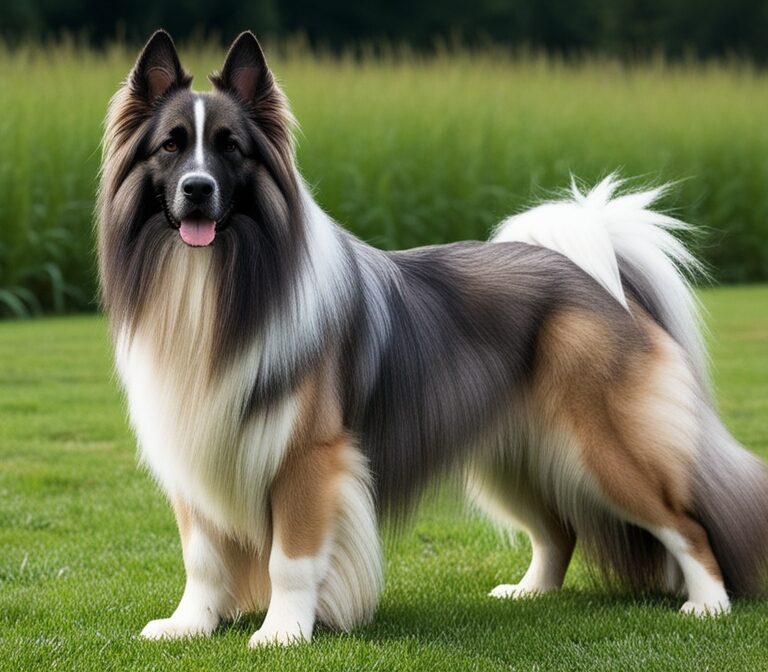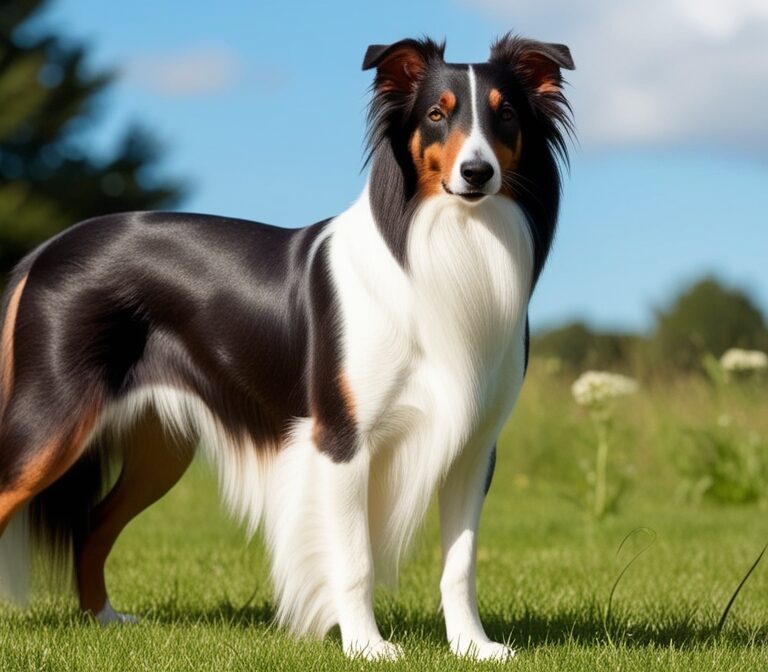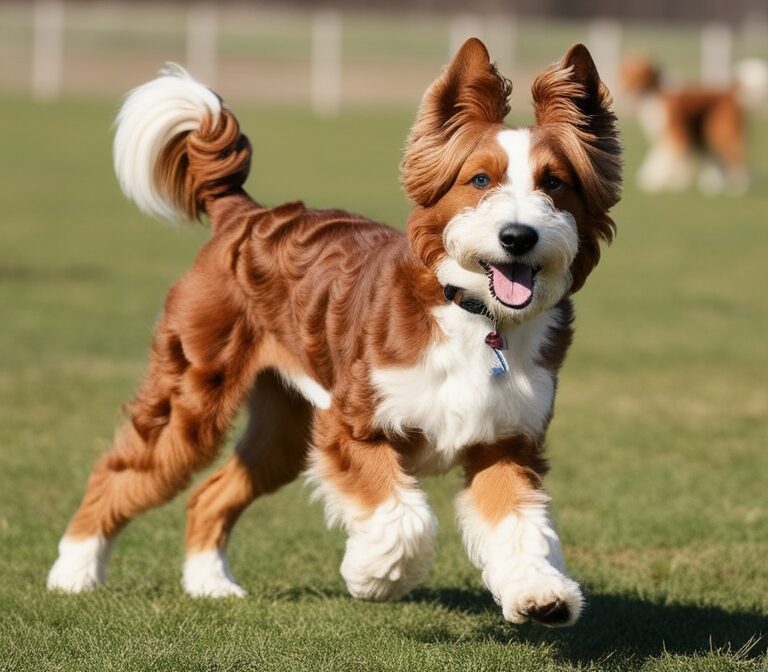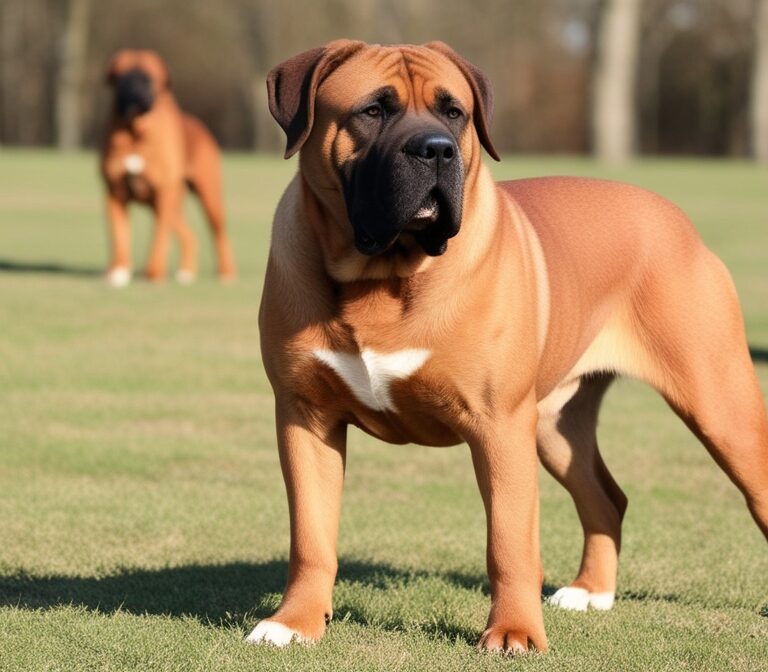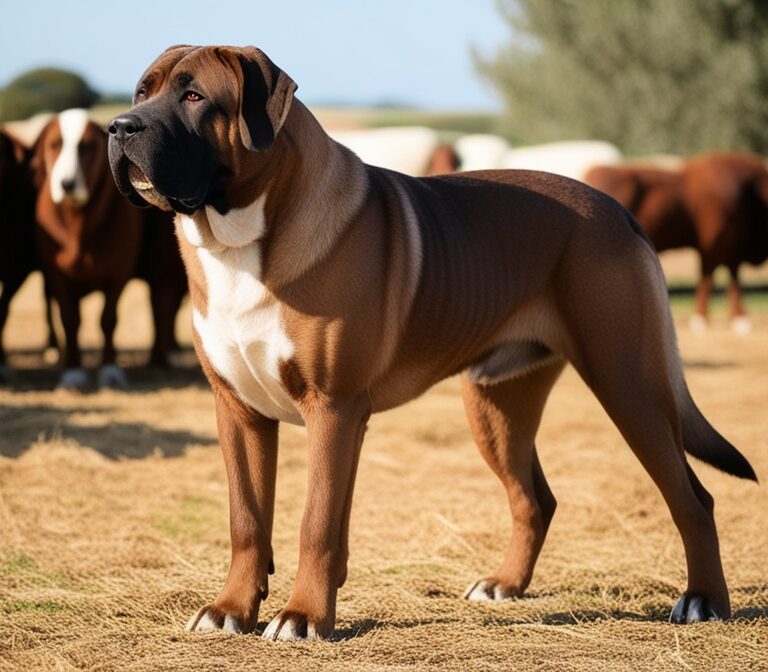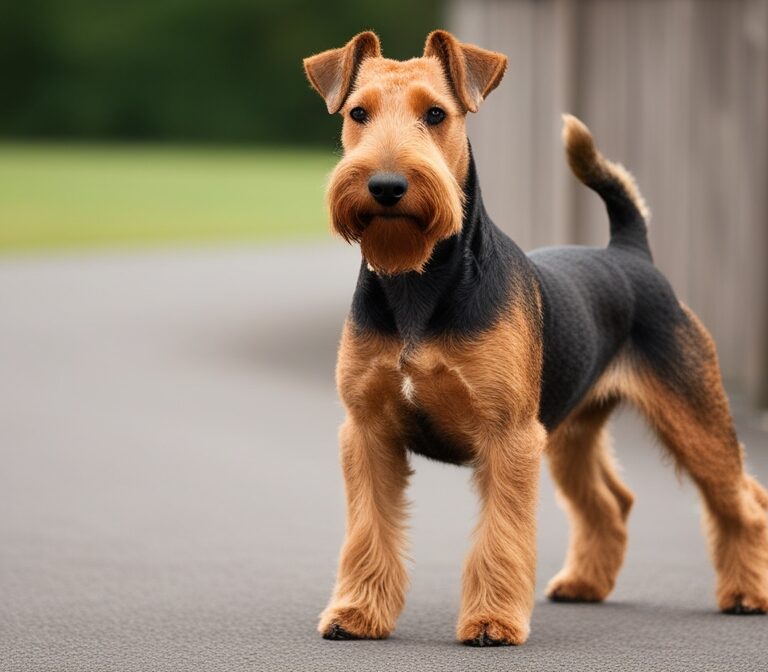Bouvier des Flandres: Complete Breed Guide to History, Temperament, Care, and Training

Overview
The Bouvier des Flandres is a powerful and versatile working breed that originated in the farmlands of Belgium. Known for its strength, intelligence, and loyalty, the Bouvier has long been valued as a cattle herder, farm guardian, and cart puller. Despite its rugged appearance, this breed is calm, thoughtful, and deeply devoted to its family. Bouviers typically stand between 23.5 and 27.5 inches at the shoulder and weigh between 70 and 110 pounds, making them an imposing yet agile presence. Their thick, shaggy double coat in shades of black, fawn, or brindle protects them in harsh weather while adding to their distinctive look. The breed balances power with gentleness, combining the traits of a reliable protector and a steady family companion. Intelligent and trainable, the Bouvier des Flandres thrives in active households that can provide both mental stimulation and physical exercise.
History and origins
The history of the Bouvier des Flandres begins in the Flanders region of Belgium, where farmers needed a multipurpose dog to help with daily tasks. The word “Bouvier” translates from French to “ox driver,” reflecting the breed’s primary role in managing livestock. Early Bouviers were expected to herd cattle, guard farmyards, and pull carts loaded with goods, making them essential to rural life. By the late 19th and early 20th centuries, the breed became well established as a trusted farm worker. During World War I, Bouviers were recruited into military service as messenger dogs and ambulance dogs, admired for their courage and resilience under fire. The war devastated the breed’s population, but dedicated breeders worked to revive it, leading to international recognition. The American Kennel Club accepted the Bouvier des Flandres into its working group in 1929, while the Fédération Cynologique Internationale and the United Kennel Club also acknowledge the breed today.
Physical characteristics
The Bouvier des Flandres is a large and muscular dog built for both power and stamina. Males usually reach 25 to 27.5 inches at the shoulder and weigh 80 to 110 pounds, while females are slightly smaller but equally sturdy. The body is compact and strong, with a broad chest, deep ribcage, and powerful hindquarters that support activities such as pulling carts and herding livestock. The head is proportionate and square with a strong muzzle and expressive dark eyes that convey intelligence and confidence. A hallmark of the breed is its rough, double-layered coat that protects against weather extremes. The outer coat is coarse and wiry, while the undercoat is dense and insulating. Coat colors include black, brindle, and fawn, often with a tousled, unkempt look that adds to the breed’s rustic charm. Many Bouviers are seen with cropped ears and docked tails, though natural ears and tails are increasingly common.
Temperament and personality
The temperament of the Bouvier des Flandres is marked by loyalty, steadiness, and intelligence. Known as a calm and thoughtful breed, the Bouvier is protective of its home and family without being unnecessarily aggressive. It is affectionate and gentle with its owners, often forming strong bonds and seeking companionship in daily life. With children, Bouviers are patient and watchful, though their size means supervision is necessary to prevent accidental knocks during play. The breed’s alert nature makes it an excellent watchdog, always ready to signal unusual activity with a deep bark. Despite its guarding instincts, the Bouvier is not overly excitable and tends to approach situations with confidence and composure. Its intelligence and desire to please make it highly trainable, but the breed also has an independent streak that requires consistent and firm guidance. Overall, the Bouvier des Flandres combines courage with calmness, making it a versatile worker and devoted companion.
Health and lifespan
The Bouvier des Flandres is generally healthy, with a lifespan of 10 to 12 years, but like many large breeds, it is predisposed to certain health conditions. Hip dysplasia and elbow dysplasia are common concerns, affecting mobility and comfort as the dog ages. Eye conditions such as cataracts and progressive retinal atrophy can also occur, making regular eye examinations important. Another potential issue is bloat, or gastric dilatation-volvulus, which is a life-threatening condition requiring immediate veterinary care. Thyroid problems, including hypothyroidism, may also affect the breed. Responsible breeders screen for these conditions to reduce risks, and owners should prioritize regular veterinary checkups, proper diet, and weight management to support long-term health. With preventive care and attention to early signs of illness, most Bouviers enjoy long, active lives.
Grooming and maintenance
The thick, rough coat of the Bouvier des Flandres requires regular maintenance to remain healthy and comfortable. Brushing two to three times per week prevents tangles and removes dirt and debris, while more frequent grooming may be necessary during seasonal shedding. The coat’s wiry texture is resistant to dirt, but without care it can become matted. Many owners choose to trim the coat every few months to maintain a tidy appearance and reduce grooming demands. Bathing should be occasional, as excessive washing may strip the coat of natural oils. Ears should be checked regularly for signs of infection, especially if cropped, while nails require monthly trimming to prevent overgrowth. Dental hygiene is equally important, with weekly brushing helping prevent gum disease. Consistent grooming not only enhances the Bouvier’s appearance but also supports its overall health and comfort.
Exercise needs
The Bouvier des Flandres is a working breed with substantial exercise requirements. Daily activity is necessary to maintain both physical health and mental balance. Long walks, structured play sessions, and opportunities for running in secure areas help satisfy the breed’s energy levels. Bouviers particularly enjoy tasks with purpose, such as cart pulling, obedience training, or herding exercises, which channel their natural instincts. At least one to two hours of vigorous activity each day is recommended to prevent boredom and restlessness. Without adequate exercise, Bouviers may develop destructive behaviors such as chewing or digging. Their endurance and stamina make them suitable companions for hiking, jogging, and outdoor adventures, provided their joints are monitored for strain. Active owners who can incorporate both physical exercise and mental stimulation into daily routines will find that the Bouvier thrives as an energetic yet balanced companion.
Training and intelligence
The Bouvier des Flandres is an exceptionally intelligent breed, capable of learning complex commands and excelling in advanced obedience. Originally bred to work independently on farms, the Bouvier is quick-thinking and resourceful, yet it also values human direction and thrives on structured training. Positive reinforcement methods, such as praise, play, and food rewards, work best because the breed responds poorly to harsh corrections. Early obedience classes are highly recommended to establish boundaries and build confidence, as Bouviers can be strong-willed if not guided consistently. Their intelligence also makes them versatile competitors in dog sports, including obedience trials, herding competitions, and tracking events. Because they enjoy problem-solving, Bouviers excel when given purposeful tasks rather than repetitive drills. Consistency, patience, and variety in training ensure they remain engaged and develop into well-mannered, reliable companions.
Socialization
Socialization is critical for the Bouvier des Flandres, particularly during puppyhood, to ensure the breed grows into a confident and balanced adult. While Bouviers are naturally protective and reserved with strangers, they should not be overly shy or aggressive. Early exposure to different environments, people, sounds, and other animals helps them adapt to a wide range of situations. Puppy classes are especially valuable, as they combine structured training with safe opportunities to meet other dogs. Without proper socialization, Bouviers may become overly territorial or wary, making them difficult to manage. Owners should provide positive experiences in parks, neighborhoods, and busy public areas, reinforcing calm and controlled behavior. A well-socialized Bouvier maintains its protective instincts while remaining approachable and adaptable, making it a steady and dependable companion in diverse settings.
Living environment suitability
The Bouvier des Flandres is a large, active breed that thrives best in homes with ample space. Ideally, they should live in rural or suburban areas where they have access to fenced yards and room to roam. Apartment living is possible but challenging, as the breed requires significant daily exercise and mental enrichment to remain balanced. Without enough stimulation, Bouviers may become restless or destructive. Because of their protective nature, they should not be left unsupervised in areas where frequent strangers pass, as they may take their guarding role too seriously. The breed’s weather-resistant coat allows them to adapt to cold and moderate climates, though they should have shelter during extreme heat or freezing temperatures. Bouviers are happiest when living with families who can provide structure, companionship, and active engagement in daily life.
Diet and nutrition
The diet of the Bouvier des Flandres should be carefully managed to support its large size, active lifestyle, and potential health risks. Most adult Bouviers require between 1,400 and 1,800 calories per day, depending on age, weight, and activity level. High-quality dog food with at least 22–26 percent protein is recommended to maintain muscle condition, while healthy fats support coat and skin health. Owners should divide meals into two portions per day to reduce the risk of bloat, a serious condition more common in large, deep-chested breeds. Puppies require diets formulated for large-breed growth, with controlled calcium and phosphorus levels to prevent joint problems. Supplements containing glucosamine, chondroitin, and omega-3 fatty acids may help protect joints and mobility throughout life. Treats should be used sparingly and preferably as part of training routines. Fresh water should always be available to keep the Bouvier hydrated, particularly during vigorous exercise.
Adaptability to different climates
The Bouvier des Flandres is a resilient dog with a coat designed to withstand variable weather. Its dense, double-layer coat provides insulation against cold, wind, and rain, making the breed well suited for life in northern climates. Bouviers enjoy outdoor activities even in snowy conditions, provided they are monitored for frostbite on ears and paws. In warm regions, however, extra precautions are necessary, as their heavy coat makes them prone to overheating. Exercise should take place during cooler parts of the day, with ample shade and water available. Owners should never shave a Bouvier’s coat, as the outer layer protects against sunburn and helps regulate body temperature. With appropriate care, the breed adapts to a wide range of climates, from temperate countryside environments to colder northern winters, though hot and humid conditions require vigilant management.
Working roles and versatility
The Bouvier des Flandres has long been admired as one of the most versatile working breeds. Historically used to herd cattle, pull carts, and guard farms, the Bouvier’s intelligence and stamina made it indispensable in agricultural communities. Over time, its role expanded into military and police work, where its courage and trainability proved invaluable. Bouviers have also served as messenger dogs, ambulance assistants, and even search-and-rescue partners. Today, while many live as companions, they remain active in diverse working capacities. They excel in dog sports such as tracking, cart pulling, agility, and obedience, and their natural guarding instincts make them effective watchdogs. Their ability to transition seamlessly between family life and demanding tasks demonstrates why the Bouvier des Flandres continues to be respected as a multipurpose working dog with enduring relevance.
Bouvier des Flandres in military and police work
The Bouvier des Flandres has a proud history in both military and police service, thanks to its courage, intelligence, and loyalty. During World War I and World War II, Bouviers served as messenger dogs, ambulance assistants, and draft animals, often carrying supplies across dangerous terrain. Their ability to remain calm under fire and their strong protective instincts made them invaluable companions for soldiers. In modern times, Bouviers continue to work in police and security roles, where they excel in tracking, detection, and guarding duties. Their imposing size and deep bark make them natural deterrents, while their even temper allows them to distinguish between real threats and everyday situations. Though less common in service work today compared with breeds like the German Shepherd or Belgian Malinois, the Bouvier des Flandres remains highly respected in law enforcement and military circles as a dependable working partner.
Family suitability and children
Despite its rugged working background, the Bouvier des Flandres is a gentle and affectionate companion within the family. Known for its loyalty, this breed bonds deeply with household members and is particularly protective of children. Bouviers are patient and steady around kids, often taking on a guardian role during play. However, their large size and strength mean supervision is necessary to prevent accidents, especially with toddlers. Early training helps channel their protective instincts into appropriate behaviors, ensuring they are watchful without being overbearing. With proper socialization, Bouviers coexist peacefully with other household pets, though their guarding nature may make them cautious with unfamiliar animals. Families who provide consistent structure, training, and active involvement in the dog’s life will find the Bouvier des Flandres to be a loving and reliable family companion.
Cost of ownership
Owning a Bouvier des Flandres involves significant financial commitment over its lifetime. The initial cost varies widely depending on the source: adoption fees typically range from $300 to $600, while reputable breeders may charge between $1,500 and $2,500 for well-bred puppies, with show-quality dogs often costing more. Annual food expenses for a large dog of this size average $600 to $900, depending on the quality of diet. Routine veterinary care, including vaccinations and wellness checkups, usually costs $400 to $700 per year, while unexpected health issues such as hip dysplasia or bloat can add thousands in medical bills. Additional expenses include grooming tools or professional grooming ($200 to $400 annually), training classes ($300 to $600), and supplies such as beds, leashes, and toys. Over a lifespan of 10 to 12 years, the total cost of ownership for a Bouvier des Flandres can exceed $20,000, making it essential for potential owners to plan responsibly.
Adoption and rescue options
Many Bouvier des Flandres dogs find themselves in shelters or breed-specific rescues due to their demanding exercise and training requirements. For prospective owners, adoption can be a rewarding alternative to purchasing a puppy. Organizations such as the American Bouvier Rescue League specialize in rehoming Bouviers, often placing adult dogs who may already be trained and socialized. Adoption fees are generally lower than breeder prices, ranging from $250 to $600, and often include vaccinations, spaying or neutering, and microchipping. Adopting an adult Bouvier also allows owners to better understand the dog’s temperament, energy levels, and health status before bringing them home. Rescue organizations carefully match dogs with suitable families, ensuring both the dog and new owners are well supported. Choosing adoption not only provides a loving home to a dog in need but also promotes responsible pet ownership by reducing demand for irresponsible breeding practices.
Common behavioral challenges
The Bouvier des Flandres is intelligent and loyal, but without proper training and engagement, it may develop behavioral challenges. One common issue is excessive protectiveness, which can manifest as wariness or territorial behavior around strangers. Early socialization and firm guidance help prevent this from becoming problematic. Bouviers are also strong-willed and may test boundaries if they sense inconsistency in leadership. Their size and strength make it essential that obedience training begins early and is reinforced throughout life. Boredom and lack of stimulation can lead to destructive habits such as chewing, digging, or excessive barking. Because of their herding background, some Bouviers may attempt to control children or other pets by nudging or circling. These tendencies can be managed with structured activities, obedience work, and positive reinforcement. With consistent training, most behavioral challenges are preventable, allowing the Bouvier to become a well-balanced and reliable companion.
Comparisons with similar breeds
The Bouvier des Flandres is often compared with other large working breeds, yet it has several distinctive qualities. Compared to the Giant Schnauzer, the Bouvier has a calmer temperament and is slightly less intense, making it more adaptable to family life. Against the Rottweiler, the Bouvier is less aggressive in guarding but more versatile in herding and farm work. The Belgian Malinois, another Belgian working breed, is more commonly used in police and military work due to its speed and drive, while the Bouvier is steadier and more composed. The Briard, a French herding breed, shares similarities in appearance and role but tends to be more sensitive and less imposing. These comparisons highlight the Bouvier’s unique balance of strength, calmness, and adaptability, making it a well-rounded choice for owners seeking both a guardian and a family companion.
Travel and adventure with Bouviers
The Bouvier des Flandres is a confident and adaptable dog, making it a suitable companion for travel and outdoor adventures when properly prepared. Due to their size, Bouviers require spacious vehicles for comfortable transportation, and travel crates should be large enough for them to stand, turn, and lie down. They generally enjoy car rides, especially when accustomed from puppyhood, but frequent breaks during long journeys are essential for stretching and hydration. For active owners, Bouviers are excellent hiking companions, capable of handling rugged terrain and long distances thanks to their endurance. Their weather-resistant coats make them well suited for cooler climates, though in warmer regions, extra precautions must be taken to avoid overheating. Owners traveling internationally must consider breed-specific import requirements, as some airlines or countries enforce restrictions on large working dogs. With proper planning, Bouviers thrive in adventurous lifestyles, enjoying both exploration and time spent close to their families.
Puppy care and development
Raising a Bouvier des Flandres puppy requires patience, consistency, and careful attention to early development. Puppies grow rapidly during the first year, often gaining 2 to 3 pounds per week, which puts stress on developing joints. For this reason, a large-breed puppy diet with controlled calcium and phosphorus is essential to support healthy skeletal growth. Training and socialization should begin immediately, with a focus on positive reinforcement to encourage obedience and confidence. Exposure to varied environments, people, and animals between 8 and 16 weeks of age helps prevent shyness or overprotectiveness later in life. Because of their intelligence, Bouvier puppies benefit from structured play, puzzle toys, and short training sessions that engage their minds. Owners should also establish grooming routines early, including brushing, nail trimming, and teeth cleaning, so the dog becomes accustomed to handling. With proper care, a Bouvier puppy develops into a strong, steady, and well-mannered adult.
Senior dog care
As the Bouvier des Flandres ages, its needs change, and owners must adjust care routines to support health and comfort. Senior Bouviers, typically from age seven onward, may experience joint stiffness, reduced stamina, and slower recovery after exercise. Shorter but more frequent walks help maintain mobility without overexertion. Diet adjustments are often necessary, with senior formulas providing fewer calories to prevent weight gain while including joint-supporting nutrients like glucosamine and omega-3 fatty acids. Regular veterinary checkups become increasingly important to detect early signs of conditions such as arthritis, thyroid imbalances, or cancer. Grooming should be continued consistently, as older dogs may struggle with self-maintenance. Owners should also prioritize mental stimulation through gentle training refreshers, interactive games, and companionship, since Bouviers are prone to depression if neglected. With attentive care, many Bouviers remain active and affectionate well into their senior years, offering loyalty and companionship throughout their lifespan.
Breed clubs and recognition
The Bouvier des Flandres is officially recognized by major canine organizations, including the American Kennel Club (AKC), United Kennel Club (UKC), and the Fédération Cynologique Internationale (FCI). Breed clubs play a vital role in preserving the Bouvier’s working heritage, health, and temperament. In the United States, the American Bouvier des Flandres Club supports responsible breeding, education, and competition events. Similar organizations exist in Canada, Europe, and other regions, providing resources for new owners and breeders. These clubs often organize herding trials, obedience events, and specialty shows that showcase the Bouvier’s versatility and capabilities. Membership in a breed club offers access to training advice, health information, and a supportive community of fellow enthusiasts. By promoting breed standards and ethical breeding practices, these organizations ensure that the Bouvier des Flandres maintains its reputation as a strong, intelligent, and reliable working dog.
Popularity and demand worldwide
The Bouvier des Flandres enjoys moderate but steady popularity worldwide, particularly among enthusiasts of working and guardian breeds. In the United States, it ranks outside the top 80 in AKC registrations, making it less common than German Shepherds or Rottweilers but more recognizable than rare breeds. In Europe, especially Belgium, France, and the Netherlands, the Bouvier is more widely known and valued for its cultural heritage. Its versatility appeals to farmers, families, and competitive dog sport handlers alike. However, its demanding grooming and exercise needs mean the breed is not as mainstream as easier-to-manage family dogs like the Labrador Retriever. This relative rarity contributes to the Bouvier’s prestige among dedicated owners who appreciate its unique qualities. Global awareness of the breed continues to grow through social media, working dog demonstrations, and breed clubs that highlight its history and adaptability.
Activities and sports for Bouviers
The Bouvier des Flandres thrives when given structured activities that challenge both mind and body. Historically bred for herding and pulling, modern Bouviers excel in a wide range of canine sports. They perform impressively in obedience competitions, demonstrating focus and discipline, and are strong competitors in tracking trials, where their keen noses allow them to follow scents over long distances. Their agility may surprise some, as they can navigate obstacle courses with precision despite their size. Cart pulling is another activity that connects the breed to its traditional role as a draft dog, offering both exercise and a sense of purpose. Many Bouviers also participate in protection sports, showcasing their guarding instincts under controlled conditions. Beyond competition, structured games such as fetch, hide-and-seek, and puzzle toys help keep Bouviers mentally sharp. Consistent engagement in activities prevents boredom, strengthens the bond with their owners, and highlights the breed’s versatility.
Responsible breeding and genetic testing
Responsible breeding is essential to preserve the health and temperament of the Bouvier des Flandres. Ethical breeders carefully screen for hereditary conditions such as hip and elbow dysplasia, cataracts, bloat, and thyroid disorders, using recommended health tests before pairing dogs. Genetic testing for known markers reduces the risk of passing harmful conditions to puppies. Reputable breeders prioritize temperament, ensuring Bouviers are both protective and well-balanced, avoiding lines that produce aggression or nervousness. They also follow breeding guidelines set by organizations like the AKC and FCI, which maintain standards for size, appearance, and working ability. Prospective owners should seek breeders who provide transparent health records, allow visits to see parent dogs, and remain available for lifelong support. By supporting responsible breeding practices, owners not only protect their own dogs but also contribute to the long-term welfare of the breed.
Tips for first-time Bouvier owners
First-time owners considering a Bouvier des Flandres must be prepared for the commitment required by such a large, intelligent working breed. Daily exercise and consistent training are non-negotiable, as Bouviers become restless without stimulation. Early socialization is crucial to prevent excessive protectiveness or shyness, while obedience training builds a foundation for good manners. Owners should invest in grooming tools or schedule professional grooming, as the thick double coat requires regular maintenance. Space is another key consideration, as Bouviers do best in homes with yards rather than small apartments. Patience and confidence are essential qualities for owners, since Bouviers are intelligent enough to challenge weak leadership. Joining breed clubs, training classes, and online communities can provide valuable guidance and support. With preparation and dedication, even first-time owners can succeed, enjoying the loyalty, companionship, and versatility that the Bouvier des Flandres offers.
Conclusion
The Bouvier des Flandres is a remarkable dog that combines strength, intelligence, and loyalty with an enduring work ethic. Originally bred as a farm helper in Belgium, the breed has proven its versatility in herding, guarding, cart pulling, police work, and family companionship. Its rugged double coat, imposing presence, and calm temperament make it both a capable worker and a devoted household protector. While not the best choice for casual or inexperienced owners unwilling to meet its needs, the Bouvier thrives in homes where exercise, training, and companionship are prioritized. With a lifespan of 10 to 12 years and a strong bond with its family, the Bouvier des Flandres continues to be celebrated worldwide as a noble and versatile breed.
